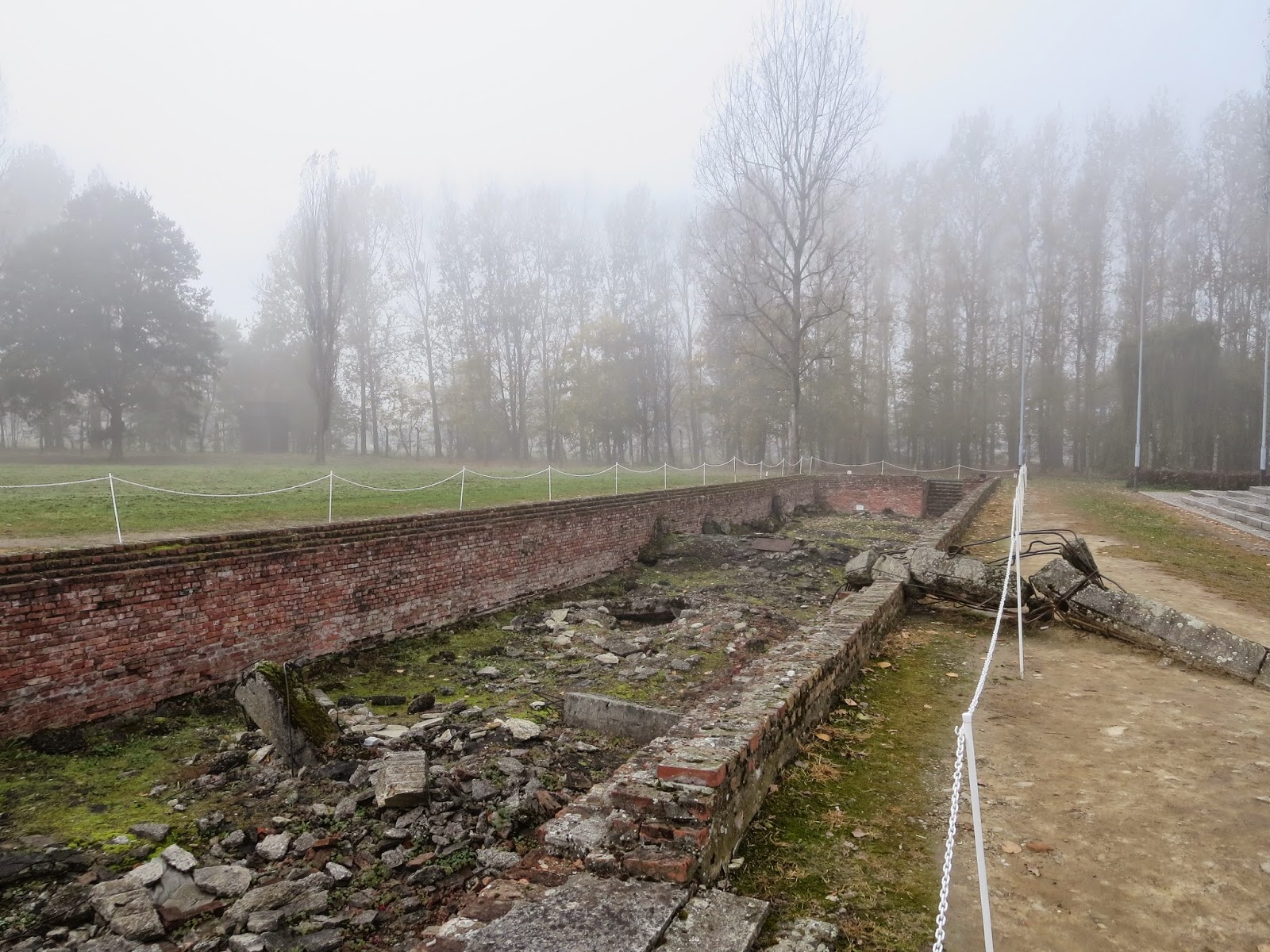When we got there we had to put on one of those napkins that you tuck into your shirts, but since this was the middle ages, one of the girls had to come up behind you and tie it around your neck for you and give you a kiss on the cheek after. We then indulged in a lot of bread with lard, grapes, apples, and beer. Lots and lots of bread. And lots and lots of beer.
Here is the food and plate
Throughout the dinner our host, who was dressed as a man from the middle ages, organized games for us. There was darts, a middle ages dance, the firing of a crossbow, and other strange but fun stuff. We all had a blast doing it and our host was great. After the bread and stuff we had a bowl of soup jam packed with incredibly tender meat. With of course bread. After that we all got a chicken leg to eat, which was also delicious. It cam with bread. After that is when we did the games and stuff and we were all kind of hoping there would be more food. Then BAM! He brings out this giant tray of roasts. Each one was over a pound, just a huge, delicious, tender brick of meat. That was amazing.
Putting a beating down on the chicken
The roast putting a beating down on me
Modelling some lard and bread. I think I had 10-15 slices
Overall the castle experience was incredible. We had an incredible time. It was a blast. However, the last train from where we were back to Weimar left at 11:05 pm, so at 10:30 we were like uhhhh we should go... because its a far walk. Then about half way through the walk our professor was like uhhhh no we need to run. So we got there right when the train was arriving. I then tried on Cam's glasses, which might be my new look
I look somewhat sophisticated
The next day we visited the house of Johann Wolfgang von Goethe, a famous German poet, who is basically like the German Shakespeare, only actually interesting and fun to read (oohhhhh burn Shakespeare)
We toured his house and I actually had to give my Referat, which is basically an oral report, about Goethe's house, while standing in Goethe's garden, which was cool.
Giving my Referat in Goethe's garden
After the tour we got to go off on our own to look for some food. Cam Josh and I got a delicious sausage on a roll and then went to a bakery for an underwhelming dessert and coffee. Oh well. Can't win them all.
We then met as a class again at the Bauhaus Museum. It was weird. I did not like it. Some of us decided to leave and take the 20 minute bus ride to the Buchenwald Concentration Camp.
Buchenwald, much like Auschwitz II Birkenau, was mostly destroyed. We were also there late so the main exhibition was closed, so we just toured the grounds. It did not compare to Auschwitz, but I was still really glad to be able to see it. Here are some photos.
The main gate
"To each his own" or "To each what he deserves" written in the gate to the camp
This is the site of the old quarry, where the prisoners would be forced to work
The view from Buchenwald overlooked a valley, and it was strange how beautiful it was there
We did not have much time at Buchenwald because we had to be in Weimar for 6:30 for a play, so we went back. The play was really weird. I don't know what happened. It was weird.
After the play Cam and Josh and I went on a hunt for good food. For some reason we went for pizza, and it was absolutely terrible. Mine had whole olives just strewn across the pizza. It was just terrible. Here is a photo of Josh and Cam expressing their disgust
Keen observers will note that all of the pizza was eaten
After this we met up at a place called Havana Club Weimar with the rest of the group and had some drinks. We all had a great time, stayed there until about 1 am when I was getting ready to fall asleep at the table. It was a good time though. We went back to the Hostel, where one of the girls in our group had baked a cake, so we ate that and went to bed. It was delicious.
Cam and I at Havana Club Weimar
On Sunday we woke up and had to take an 8 hour bus ride from Weimar to Munich. It actually was not bad at all though. I thought I would hate it. The highlight was driving through Nuremberg, which was incredibly beautiful, Hopefully I go soon. The lowlight was when I got a bloody nose on the bus. It was incredibly thick and went on for about 10 minutes. I got blood everywhere and filled up the sink with blood. It was a disaster and was so thick it looked like my brains were coming out. I thought I was going to bleed out right there in a bus bathroom in Germany.
Here are some more random photos from Weimar
Group photo in Goethe's Garden
Group photo at Geothe's and Schiller's famous statue
Group photo outside the castle
That's all for now. I honestly will start trying to be better at this blogging thing and do it more often. Until next time, whenever that is










































































